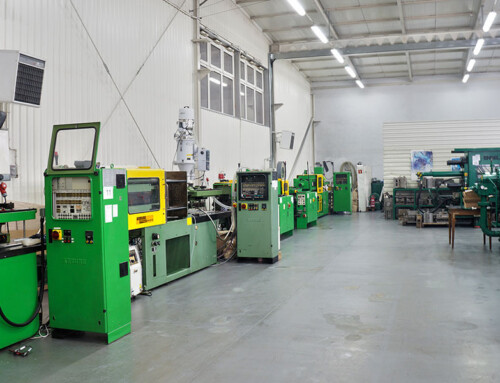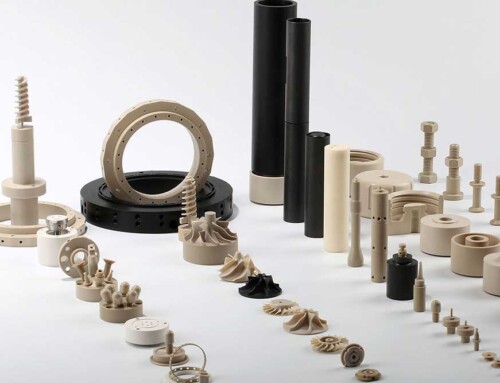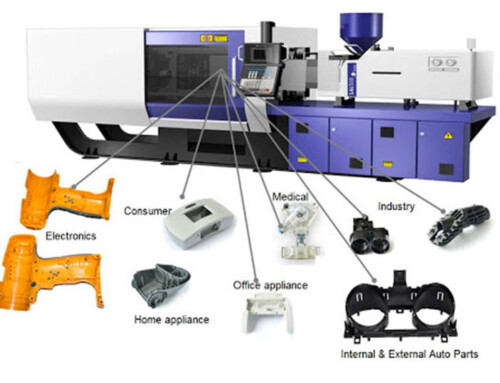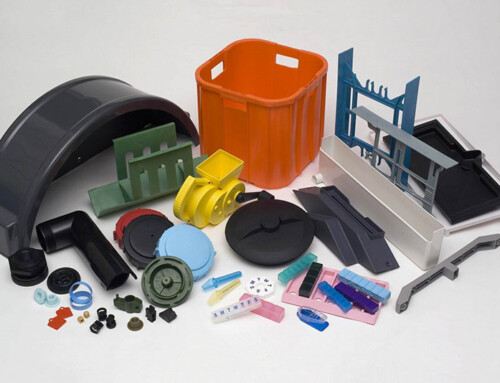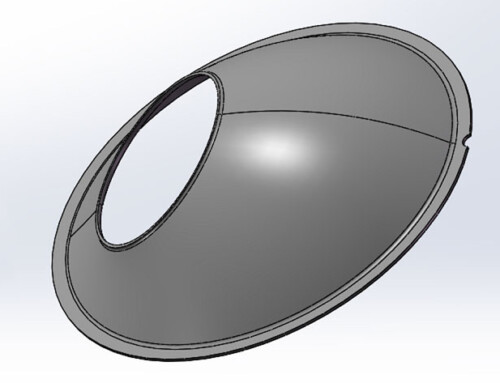There are many factors that need to be considered when you decide to design and develop a new plastic part, such as project budget, material properties. For the project budget, you should think over the material cost, how many quantities you need for the trial order, and how many quantities you need in the whole mold life. For the material properties, you should consider an intended application, processing performance, mechanical, chemical, optical, combustion and gas barrier, electrical insulation properties.
The fundamental purpose of the choice of plastic materials is to meet the performance requirements of the products at the lowest cost, which is the first factor to be considered in the selection of plastics. For specific plastic products, the performance requirements are various, and the main performance, related performance, and supplementary performance should be distinguished in the selection, shown in the table below:
| Performance | Details | Example: food-grade mechanical gear |
| Main Performance | Determine the key performance of product application, select the characteristic properties of the material. | wear-resisting, self-lubricating, hygienic |
| Related Performance | Affect the auxiliary performance of the product application, select the material which should have the performance. | impact resistance, fatigue resistance, heat-resisting, dimensional stability |
| Supplementary Performance | Does not affect the use of the product but can expand the performance of the application, select the additional performance of the material. | flame retardance, weather ability, insulating, chemical resistance |
Economic applicability is an important factor in the selection of plastic materials. If the selected plastic resin can meet the requirements of performance and processing, but if the cost is too high to be put into production, it is unwisely to put it on the market, only the inexpensive products can have good market competitiveness. The cost of plastic products mainly includes raw material price, processing cost, operating and maintenance cost.
1. Raw Material Price
The cost of raw material accounted for the largest proportion of product costs, in addition, the price of raw material fluctuated by shipping cost and market demand. The approximate price comparison of some plastic materials is shown in the table below:
| Low-price | PP,HDPE,PS,PVC,LDPE,LLDPE,PET |
| Mid-price | ABS,POM,PMMA,PBT,PA6,PA66,PC,PU |
| High-price | PTFE,PPS, PI,PEEK |
Under the premise of satisfying the performance of products, the raw material with lower price should be selected as far as possible. For some plastic products with higher performance requirements, the plastic products can be compensated by some additives.
2. Processing charges
It is an important part of the cost, the plastic product should be produced at a low processing cost as far as possible. Processing costs mainly include equipment costs, processing energy consumption, waste scrap, etc.
There are many plastic processing methods, and the price of processing equipment is different. From the perspective of reducing investment, the following methods should be selected in order: vacuum forming, compression molding, blow molding, extrusion molding, injection molding, and calendaring molding.
The energy consumption of processing mainly refers to the consumption of electric energy due to heating and power supply in the molding process. General engineering plastics need to be dried before molding, after the molding, the product tends to remain internal stressed and requires post-processing. The energy consumption will increase correspondingly. Commodity plastics need less drying and post-treatment, and the energy consumption is lower correspondingly.
In addition, the higher the processing temperature of plastic varieties, the processing energy will increase.
The plastic processing waste generation rate is different depending on the molding method, the sequence is as follows:
blow molding > extrusion blow molding> injection molding > calendaring molding > compression molding > extrusion molding
Among them, vacuum forming generates the most waste, such as forming a disposable cup waste rate as high as 30%. The waste in production should be reused as much as possible. To improve the utilization of material and reduce material costs.
3. Product Service Life
For non-disposable plastic products, the extension of the service life means that the price is reduced. Choosing suitable plastic material, and doing stabilization processing, can extend the life of the plastic product, but the price of the product tends to increase.
Various plastics have distinct properties, when you choose the suitable plastic for your part, you should consider the mechanical, chemical, optical, electrical insulation, combustion, and flame retardance properties.
1) Mechanical property
The mechanical property of the plastic part must be considered from three aspects:
- the magnitude of force (middle and low loads and high loads)
- type of force (tensile, compressed, bending, impacting, shearing, etc.)
- nature of force (fixed load and intermittent load)
Due to different forces are loaded on each plastic part, the requirements of plastic material mechanical property are different, see below table:
| Product application | Mechanical performance requirement |
| automobile dashboard, bumper | impact strength |
| sports equipment | bending strength |
| rotating shaft | twisting strength |
| piston, bearing, guide rail | abrasion resistance |
| bolt | shearing strength |
| water pipe, gas pipe, beverage bottle | bursting strength |
| pull rod, cordage | tensile strength |
| the seal ring, gasket | compression strength |
#1 General structural parts
It mainly includes brackets, gaskets, nuts, bolts, fittings, handles, fittings, handles, steering wheels, etc. The force is not large, and the load is generally fixed. PP, HDPE, HIPS, and thermosetting resins can be used.
Special occasions in which the requirements of mechanical properties are high can choose PA, PC, POM, and glass fibre reinforced plastic.
#2 Intermittent loaded plastic part
Such as gear, rack, chain, sprocket, cam piston ring, etc, these kinds of products should have high bending resistance, impact resistance, fatigue resistance, excellent abrasion resistance, certain heat resistance, and self-lubricating properties on some occasions, so as to ensure stable performance in long-term use.
Commonly used materials are PA, PC, POM, PPO, UHMWPE, PEEK, PTFE, PI, and glass fiber reinforced plastic.
2) Chemical property
For some plastics which have esters, acyl esters, ethers, and siloxy groups that exist in macromolecules, hydrolysis reactions are prone to occur in the presence of acids, alkalis, and water. Such as PET is not acid-proof, alkali proof, and high-temperature water; PA is easy to absorb moisture, not acid-proof; PF and UP are not alkali proof. But PVC, PE, PP, and PS all have good acid-proof, alkali-proof, and water resistance.
Macromolecular backbones or branches containing -CH3, -C6H5 groups are often not resistant to non-polar solvents, such as gasoline, benzene, toluene, etc. For strong oxidants (such as concentrated sulfuric acid, concentrated nitric acid, aqua regia, etc.), except PTFE, almost all other plastics will be subject to erosion.
The corrosion of solvent media is mainly related to the solubility parameters of plastics, which is especially important in the selection of amorphous plastics. In general, the chemical resistance of commonly used plastics can be expressed as follows:
fluororesin > chlorinated polyether >PPS>PVC,PE,PP>PC,PET,POM,PA,PSU,PI>PF,EP,UP
In the actual selection of plastic anti-corrosion materials, a comprehensive assessment shall be made on the types, conditions, concentration, temperature, and oxidation of the medium, the force loaded and strength requirements of the product, as well as the costs and the forming and processing, finally choose the suitable plastic material.
3) Optical property
Characterize material optical performance indexes commonly used are light transmittance, haze, refractive index. Generally, pure amorphous plastics are mostly colourless and transparent, the greater the crystallinity, the worse the light transmission and transparency.
Besides the transparency, plastic material selection should also pay attention to the application of the product and specific requirements, for the optical disk, material performance should be less affected by the environment, has good creep resistance, has long-term mechanical stability; for the recessive glasses, should have highly stable optical performance, high water absorption, high oxygen permeability, hygienic and non-toxicity, good physiological compatibility, softness, and elasticity.
| Application | Material for the specific application |
| Commonly used | transparent package: PE,PS,PP,PVC,PET |
| transparent sheet: PP,PVC,PET,PMMA,PC | |
| transparent tube: PVC, PA | |
| transparent bottle: PET, PVC, PP, PS, PC | |
| Optical lens | PC, PMMA, CR-39, HEMA |
| others | lighting equipment: PS, ABS, PC, PMMA optical fibre: PC, PMMA optical disc: PC, PMMA, EP, PETG |
4) Electrical insulation
Plastics are all excellent dielectrics with small dielectric constants, but the dielectric constants of different plastics are also significantly different. The dielectric constants of non-polar plastics between 1.8 and 2.5, such as PE, PP, PS; weakly polar plastics between 2.5 and 3.5, such as PC, PET, PMMA, PBT; polar plastics between 3.5 to 8, such as PA, PVC, PF, and so on.
As insulated wire and cable, in order to reduce energy loss, should choose small dielectric constant plastics; as a capacitor, can choose slightly larger dielectric constant, currently common used for capacitors is biaxially oriented PP and PET films.
As an insulating material, the resistivity should generally be greater than 1010 Ω·cm, most plastic materials meet the requirements, and are widely used as electrically insulating materials for different purposes. General use of wire and cable can select PVC, for high frequency and high-pressure occasions need to use high resistivity, the low dielectric constant, high dielectric strength of PE, hard parts can choose HDPE, PP, PTFE, PI, etc.
In the electronics industry, in addition to the electrical performance requirements of various components, it also has high requirements for mechanical properties, heat resistance, and molding processability. It can be selected according to specific conditions, commonly used plastics include PC, PP, POM, and PET, PBT, PPS, PI, PTFE, etc.
5) Combustion and Flame retardancy properties
Plastics are organic compounds containing a large number of combustible elements such as carbon and hydrogen in the molecule, some are flammable and have poor flame retardance. However, if the macromolecular structure contains halogen and atoms such as nitrogen, phosphorus, and sulfur, or the aromatic chain is contained in the main chain structure, the material has a certain degree of flame retardance or self-extinguishing property.
The combustion and flame retardance properties of general plastics can be characterized by the oxygen index (OI). OI<22 is a flammable material, OI between 22 and 27 is self-extinguishing plastic, and OI>27 is flame retardance plastic. OI values of commonly used plastics are shown in the table below:
| Material | OI |
| POM | 14.9 |
| PU | 17 |
| PMMA | 17.3 |
| PE | 17.4 |
| PP | 18 |
| PS | 18.1 |
| ABS | 18.3 |
| EP | 19.8 |
| PBT | 20 |
| PET | 20.6 |
| PA66 | 24 |
| PC | 24.9 |
| PA6 | 26.4 |
| PF | 30 |
| PPO | 30 |
| PSF | 32 |
| PI | 36 |
| PPS | 40 |
| PBI | 58 |
| PTFE | 95 |
If you are uncertain to choose which plastic material for your new product, welcome to contact us, we will consider your budget, product application, properties, help you to select the suitable material, and make good performance plastic parts for you.

